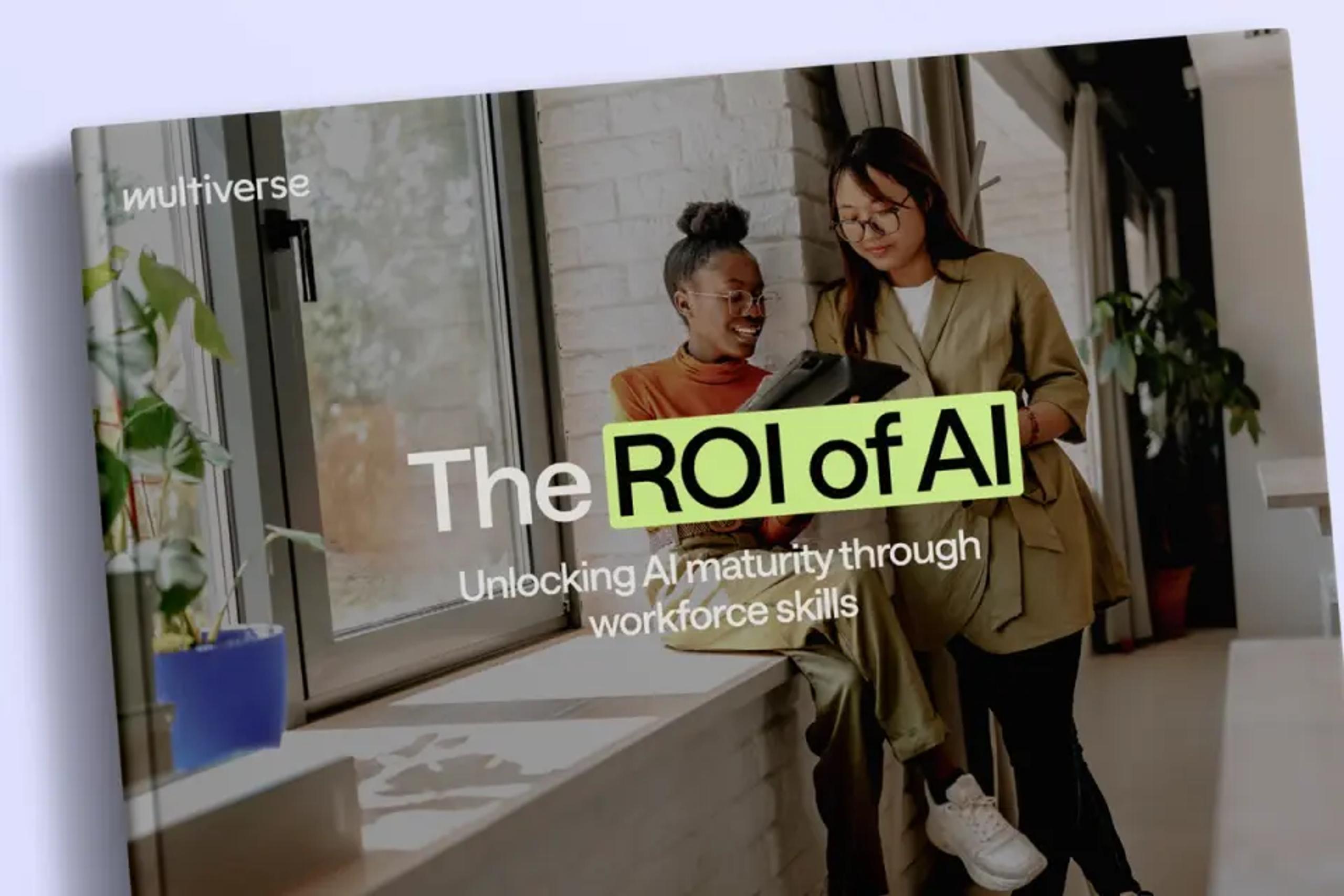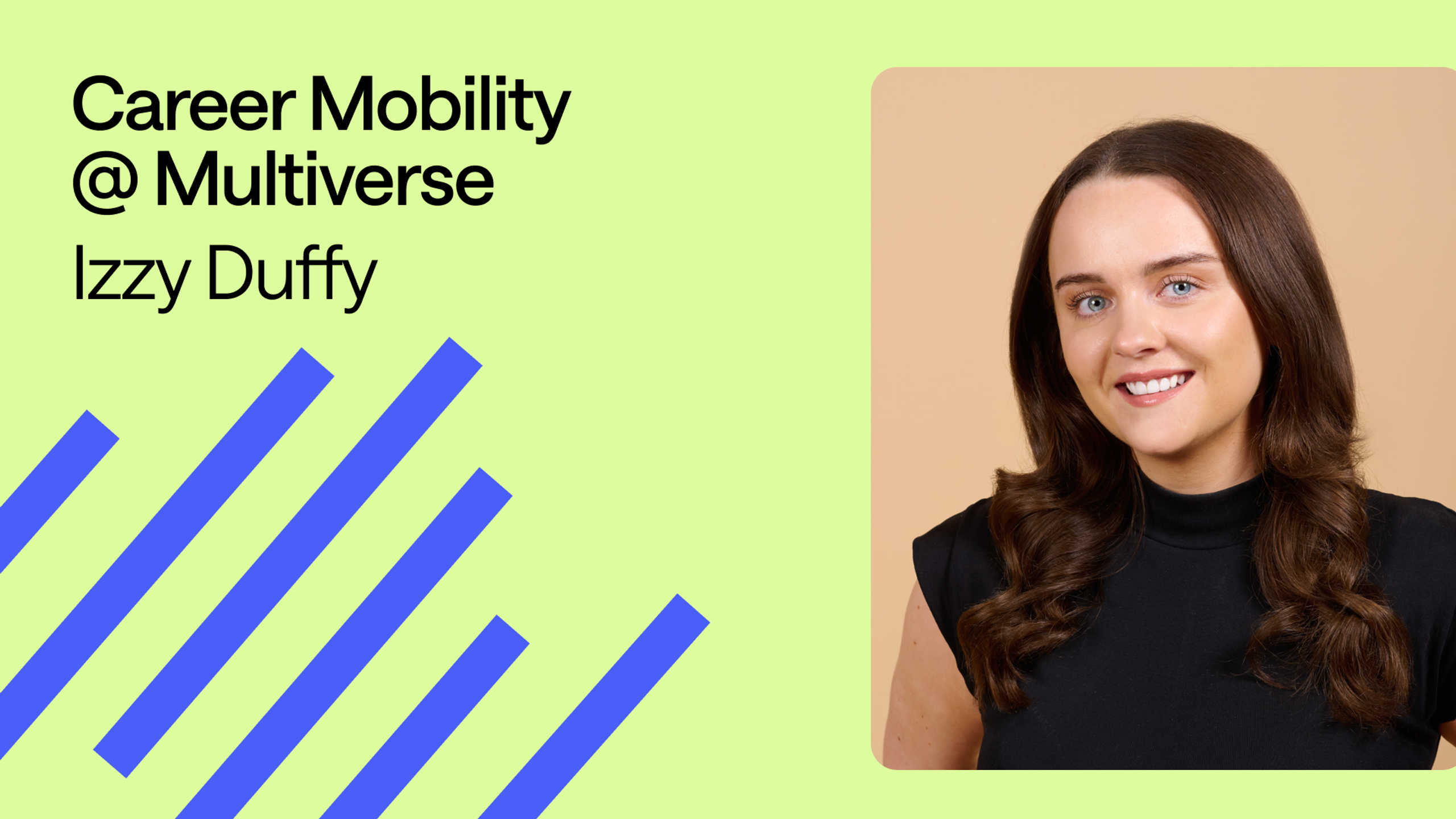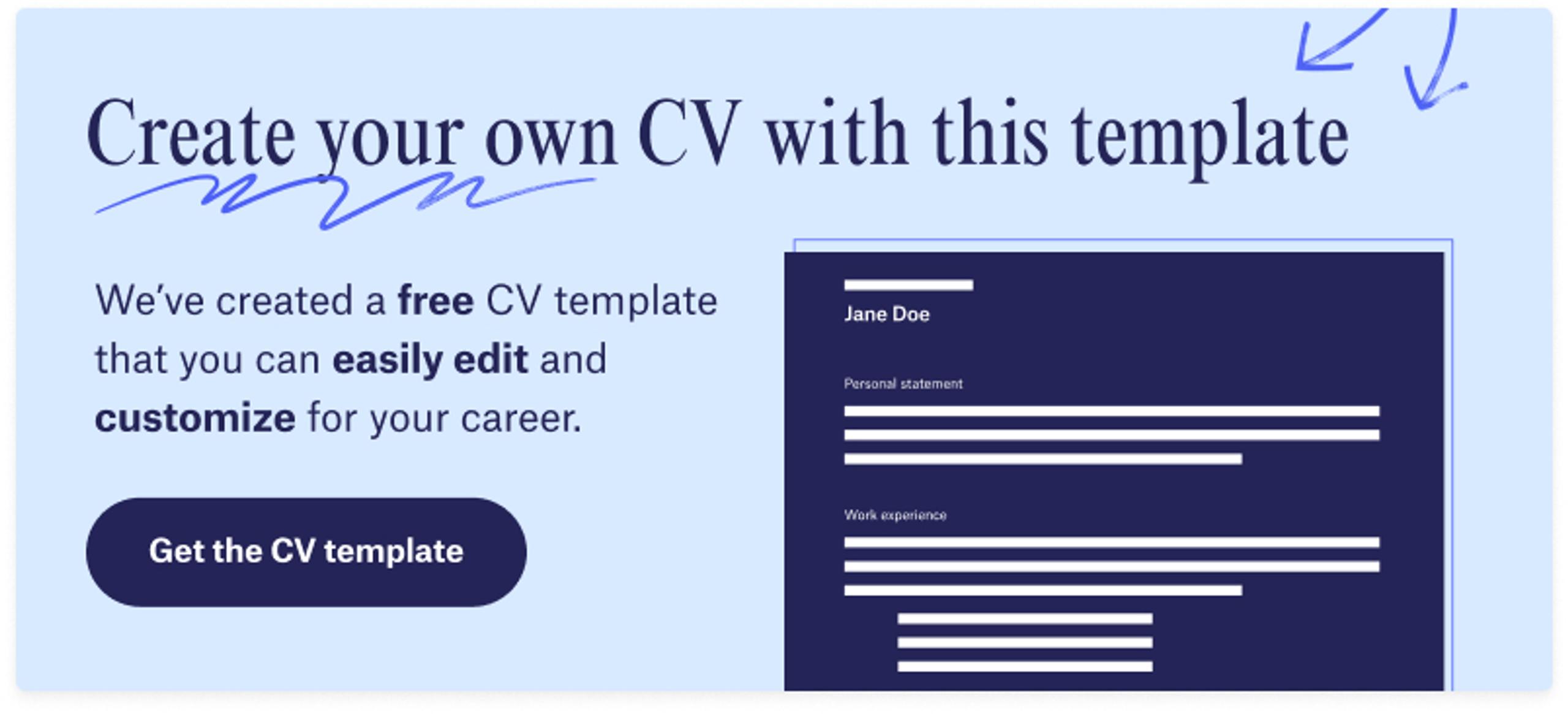Contents
Your curriculum vitae (CV) shows recruiters who you are and why you’re an excellent fit for their job vacancy. As it’s your first chance to grab their attention, you must make it count. A CV template can help you make a positive first impression and boost your chances of reaching the interview stage.
In this article, we’ll cover how to create a CV, broken down by key sections. We’ll also share expert tips, a time-saving template and CV examples for your reference.
Best CV format for the UK
UK recruiters get around 250 CVs for every job advertised—and five to seven seconds(opens new window) reviewing each submission. By following the CV format below, you’ll give yourself the best chance of passing the ‘seven-second test’.
Pro tip: You can use the following format as a general outline. But you should always tailor your CV to each vacancy. That way, recruiters are more likely to review your CV in full rather than putting it to the back of the pile.
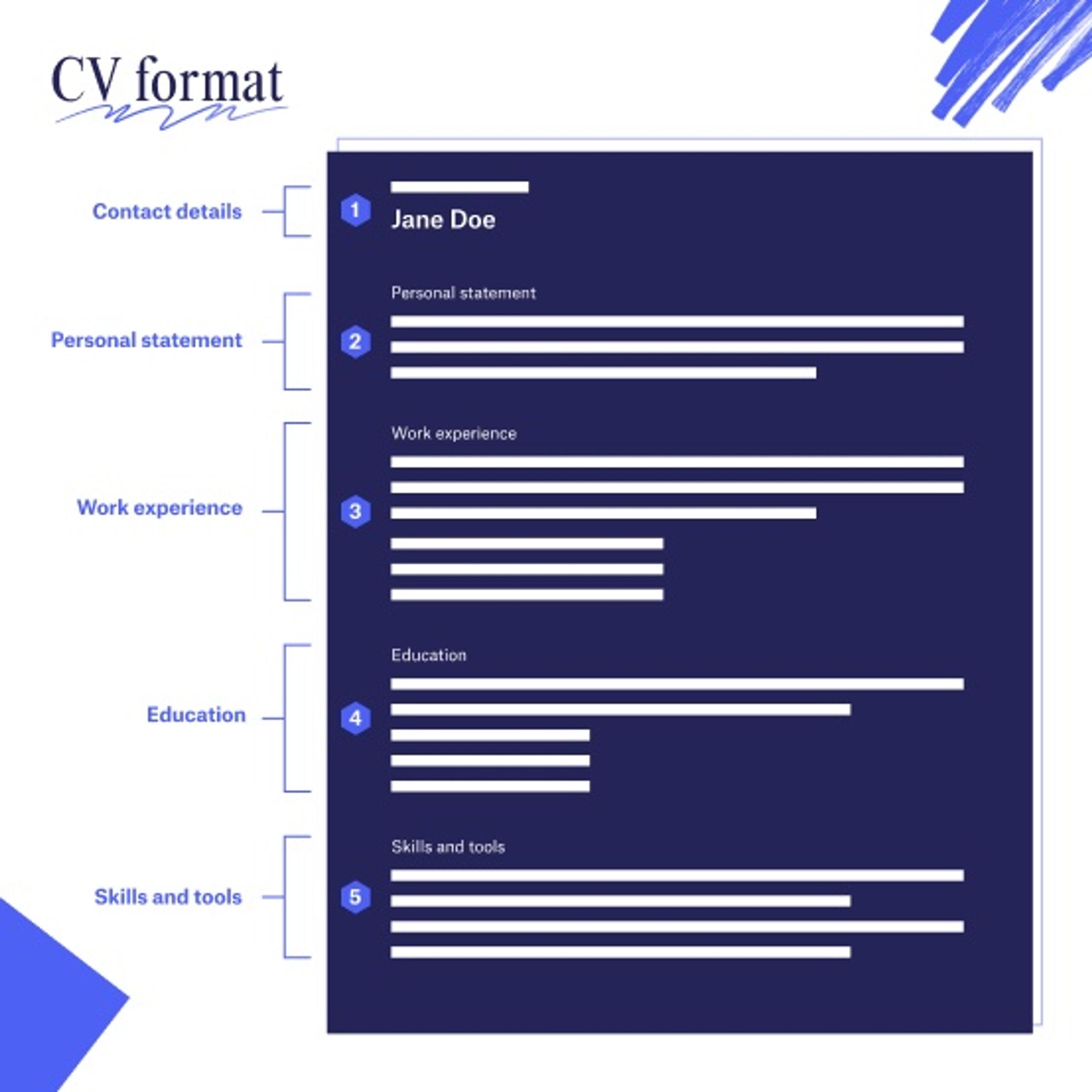
1. Personal statement (or CV summary)
Data Analyst personal statement example:
Attentive Data Analyst who has contributed to data-led solutions which reduced business costs by 20% and increased operational efficiency by 15%. Proven experience using MS SQL and data visualisation techniques to gather, clean and segment data. Positive individual seeking a role within a company that encourages professional development and collaboration.
Tips to create a personal statement for your CV:
- Keep it concise: Aim for two to three sentences explaining who you are, what you can offer the company and your career goals.
- Meet the recruiter's expectations: Share any relevant skills and experience that match the job requirements listed in the advert.
- Use active verbs: Active verbs, and active language in general, helps capture your reader’s attention. In the example above, we used the active verbs ‘gather’, ‘clean’ and ‘communicate’.
- Use data to demonstrate impact: Include data points that show where you’ve made impact in previous roles. We used ‘Reduced business costs by 20%’ and ‘increased operational efficiency by 15%’ in the example.
2. Work experience or employment history
The work experience section on a CV gives an overview of your past employment history. It showcases your relevant professional experience to recruiters. You should include job titles, dates, and key responsibilities, sharing your most recent roles first.
Work experience example
The Business Factory, London — Junior Data Analyst Apprentice
January 2022 - Present
- Worked with the Senior Business Analyst to optimise the company’s inventory management system.
- Used specialist tools like MS SQL to collate, clean and review raw data.
- Helped report and present data insights to non-specialists, resulting in new project funding being approved by senior management.
Tips to create a work experience section for your CV:
- Focus on two to three roles with relevant achievements: Showcase two to three roles, writing roughly an equal amount against each position. Highlight responsibilities and accomplishments that are relevant to the vacancy.
- Use the third person: Using ‘they’, ‘he’, ‘she’ or the person’s name or title, rather than ‘I’, ‘you’ or ‘we’ adds an objective tone.
- Use the past tense: To establish a chronological narrative, create a professional tone and stay grammatically correct, refer to your experience in the past tense.
You can include apprenticeship roles: An apprenticeship counts as work experience and will demonstrate your commitment to becoming an expert in your profession.
3. Education
The education section on a CV lists your academic or professional qualifications and shows recruiters your educational background. Like the work experience section, you should list your education in reverse chronological order. So place your most recent qualification first, followed by your second most recent, etc.
Education section example:
Multiverse, Remote
January 2022 to June 2023
Data Fellowship apprenticeship (Level 4):
- Level 4 apprenticeship standard in Data Analytics - Distinction
Brighton College, Brighton
September 2019 to July 2021
A-Levels:
- Computing - B+
- Mathematics - A
- Business Studies - B
Tips to create an education section for your CV:
- Include where you studied and the dates: Add the name of the school, college or other institution where you studied each qualification. You’ll also need to include the start and finish dates.
- Examples of education and qualifications you can include: Add any relevant GCSEs you got at school, diplomas from college or alternatives to university qualifications, including apprenticeships.
- You don’t need to rely on traditional education: Education is less important than work experience for many roles. When comparing apprenticeship vs university qualifications, you’ll have more industry-relevant work examples as an apprentice. So if you don’t have a Bachelor’s Degree, don’t worry.
- If you’ve completed an apprenticeship, double-check your qualification level: Some apprenticeship levels are equivalent to degree qualifications—you can specify this on your CV.
- Keep it brief: List your most relevant education with Maths and English GCSE grades as a minimum.
4. Skills and tools (or key skills)
You can use the skills and tools section to highlight your hands-on experience. Recruiters will scan for keywords that match the job expectations. So first, look at any role-specific skills or tools in the job advert. Then try to include your relevant skills and experience with tools.
Skills and tools example
- Knowledge of mathematics: Applied linear algebra, statistics and probability to data analysis.
- Technical skills: Frequently used MS SQL and data visualisation techniques to gather, clean and segment data.
- Communication: Communicated complex data insights to non-specialists verbally and through data visualisation.
- Specialist tools: Experienced with MS SQL, Excel and Tableau.
Tips to create a skills and tools section for your CV
- Include a mix of hard and soft skills: Hard skills are job-specific, like the ‘technical skills’ included in the above example. Soft skills (like ‘communication’) are transferable and typically relevant to most jobs. Recruiters will look for candidates with a mixture of both.
- Include examples against each skill or tool: Don’t just list your skills and the tools you’ve used—provide real examples showing how you used them at work.
5. Contact details
The contact section usually sits at the top of your CV. It gives recruiters the information they need to contact you about an interview.
Website or contact section example
Contact details:
- Email - jondoe@gmail.co.uk(opens new window)
- Mobile - (Include your mobile number)
- Website - www.jondoeanalysesdata.co.uk(opens new window) or LinkedIn profile
Tips to create a website or contact section for your CV
- Double-check your details: You need to ensure this section is accurate and up-to-date. Recruiters will use the details to contact you—if your details are incorrect, they won't be able to reach you.
- Use a professional email: If you don’t have a professional-sounding email, preferably with your name, create one. Avoid nicknames or slang—use numbers in your email address as a last resort.
Link out to a website: If you have one, use your website to showcase your experience and any examples of projects. If you don’t have one, you can link out to your LinkedIn profile too.
6. More expert CV format tips
Here are 10 more expert tips to help you format your CV:
- Bullet points and shorter sentences make it easier for recruiters to scan your CV.
- Choose a professional and easy-to-read font—think Calibri, Arial or Times New Roman.
- Keep your body text between sizes 11-12. As sizes vary between fonts, you may have to experiment and use your best judgement.
- Format your headings (‘Personal statement’, ‘Work experience’, etc.) around four to six sizes larger than your body text.
- Set a 1-inch page margin on all four sides of your document.
- Try to stick to one page, two pages max.
- Using an image of yourself on a UK CV is uncommon and can distract from your skills and experience. The safest option is to avoid doing so.
- Aim to use keywords from the job description—especially in your CV summary, work experience and skills sections.
- Use action words and specific measurements that show how you contributed to company outcomes rather than only describing tasks.
- Proofread your CV for spelling and grammar errors before applying for a job. Ask a friend or family member to read it as an added quality check.
CV template
We’ve built a general CV template below, with instructions to help you fill in each section. For the best chance of being invited to interview, tailor the template to the role you’re applying for.
If you’re applying for a junior role, keep your CV to one page and leave out the personal statement. Instead, you can add your personal statement to your LinkedIn profile, a note to a recruiter, or your cover letter.
CV example for software engineering
You don’t need a CV to start a Software Engineering apprenticeship with Multiverse. But having one to hand is helpful as you advance through your career.
Here’s an example of a Junior Software Engineer CV that can help you build your own.
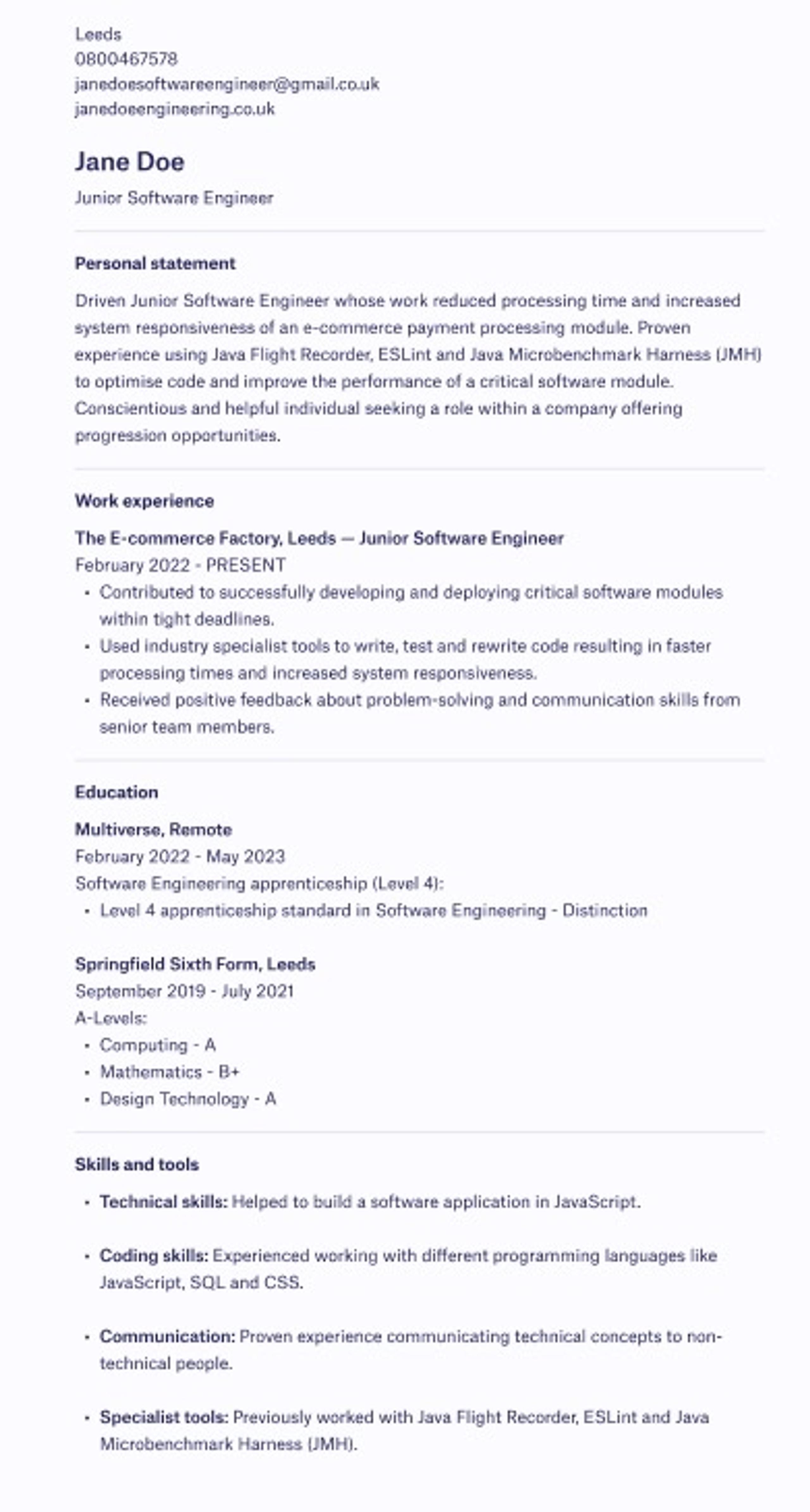
Progress your career with a Multiverse apprenticeship
You don’t need a CV template to sign up for a Multiverse apprenticeship. In about 10 to 15 minutes, you can create a Multiverse profile. Our team can then double-check your eligibility and discuss apprenticeship options.
With a Multiverse programme, you’ll gain industry experience, practical skills and a nationally recognised qualification. You can add all this to your CV template as you grow your career or apply to full-time roles.
Apply for an apprenticeship today(opens new window) and join the 93% of Multiverse apprentices who completed their programme and landed a job in their field within 90 days.
